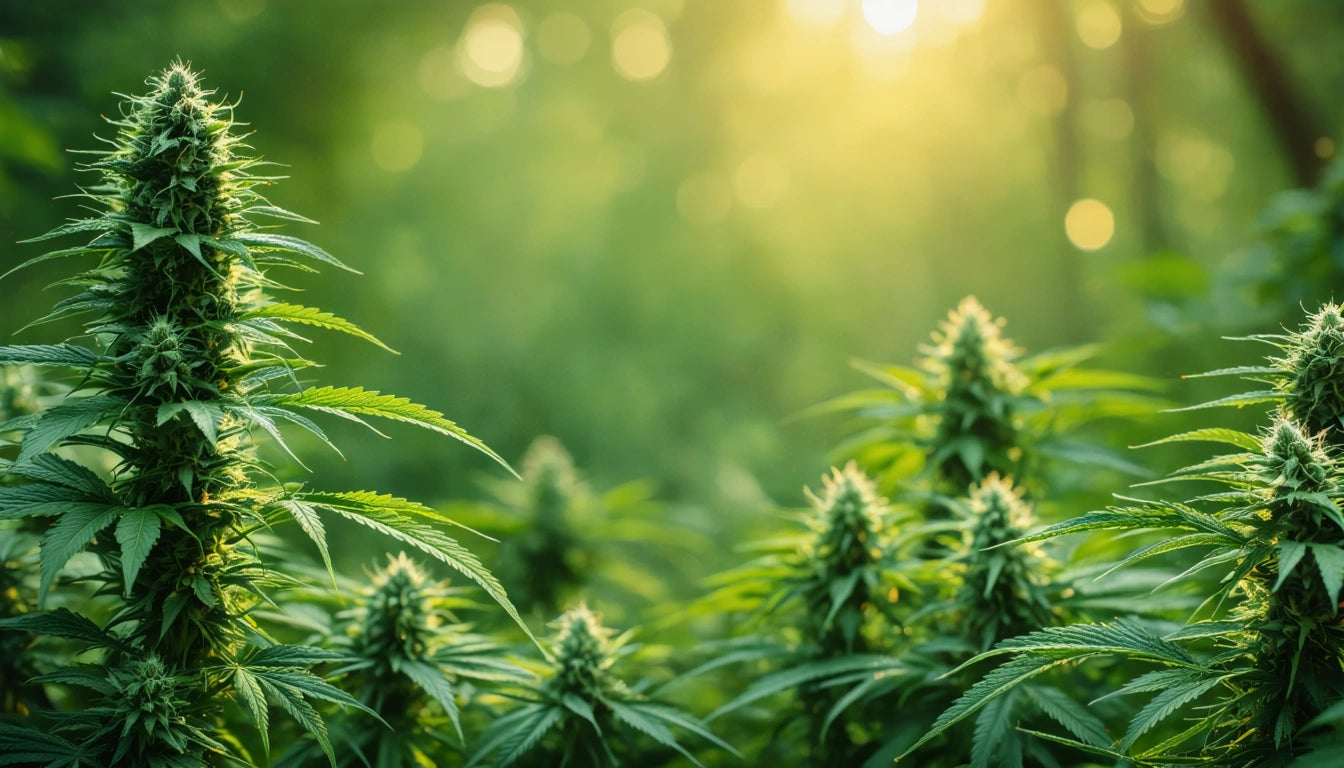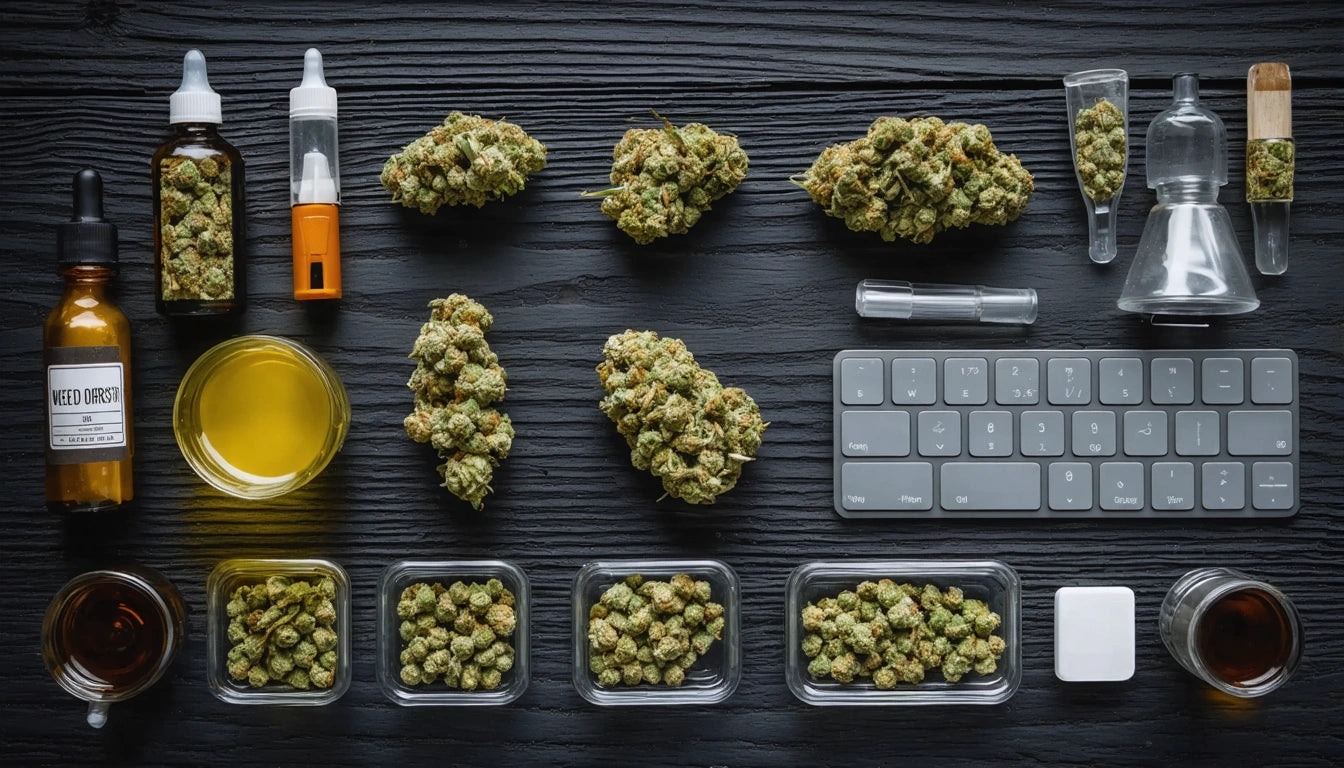Table of Contents
Understanding Trichomes on Cannabis: Identification, Function, and Preservation
Cannabis enthusiasts often marvel at the sparkling, crystal-like coating on premium flower. These tiny structures, known as trichomes, are more than just visual indicators of quality. Understanding what trichomes are in weed and their significance can enhance your appreciation of cannabis and help you make more informed decisions about products and cultivation practices.
What Are Trichomes in Weed?
Trichomes are microscopic, mushroom-shaped glandular structures that protrude from the surface of cannabis flowers, leaves, and stems. The term "trichome" comes from the Greek word "trichÅma," meaning "growth of hair." These resinous glands are responsible for producing and storing the cannabinoids, terpenes, and flavonoids that give cannabis its effects, aroma, and flavor profile.
When asking what is trichomes on weed, it's important to understand they serve as the plant's chemical factories. They're most concentrated on female cannabis flowers, creating the frosty appearance associated with potent strains. Under magnification, they resemble tiny mushrooms with a stalk and bulbous head where resin is produced and stored.
Identifying Trichomes vs. Mold on Cannabis
A common concern among cannabis consumers is distinguishing between healthy trichomes and potentially harmful mold. The confusion between moldy weed vs trichomes is understandable, as both can appear as white substances on the plant material.
Trichome Characteristics:
- Appear crystalline and sparkly under light
- Evenly distributed across the flower surface
- Range from clear to milky white to amber, depending on maturity
- Maintain a consistent appearance throughout the flower
Mold Characteristics:
- Often appears powdery, fuzzy, or web-like
- May have a patchy distribution
- Typically white, gray, or black in color
- Can have a musty, sweet, or ammonia-like smell
- May spread visibly over time
For a comprehensive guide to identifying cannabis, including spotting healthy trichomes, refer to what does weed look like.
The Function of Trichomes in Cannabis Plants
What are trichomes in plants, and why did cannabis evolve to produce them? Trichomes serve several protective functions for the cannabis plant:
- Pest Deterrent: The sticky resin traps insects and deters herbivores with bitter compounds
- UV Protection: Trichomes act as a sunscreen, protecting the plant from harmful ultraviolet radiation
- Temperature Regulation: They help insulate the plant against extreme temperatures and reduce water loss
- Cannabinoid Production: Most importantly for consumers, trichomes are where THC, CBD, and other cannabinoids are synthesized
The relationship between trichomes and potency is direct. As explained in this resource on psychoactive effects, trichomes are the primary source of cannabinoids responsible for cannabis's effects.
Types of Cannabis Trichomes
When examining what is a trichome on weed, it's valuable to understand that cannabis produces several types of trichomes, each with distinct characteristics:
Capitate-Stalked Trichomes
These are the largest and most abundant trichomes on cannabis flowers. With their mushroom-like appearance featuring a stalk and bulbous head, they're the primary producers of cannabinoids and terpenes.
Capitate-Sessile Trichomes
Smaller than their stalked counterparts, these trichomes have a short stalk and are found on sugar leaves and smaller fan leaves.
Bulbous Trichomes
The smallest type, measuring 10-30 micrometers, these are distributed across the entire plant surface but produce minimal cannabinoids.
Understanding these different types helps cultivators and consumers better appreciate what is trichomes in weed and their role in cannabis potency and quality.
Trichome Development and Harvest Timing
Trichomes undergo color changes throughout the plant's life cycle, serving as valuable indicators for harvest timing:
- Clear Trichomes: Early development stage, lower potency
- Cloudy/Milky Trichomes: Peak THC production, energetic effects
- Amber Trichomes: THC degrading to CBN, more sedative effects
For a detailed examination of this process, this guide on harvesting at the right time provides valuable insights. Additionally, this resource on clear vs. cloudy trichomes offers further clarification on optimal harvest windows.
Preserving Trichomes: Best Practices
Trichomes are delicate structures that can be damaged by rough handling, improper storage, or environmental factors. Many cannabis enthusiasts wonder, does rain wash away trichomes? While outdoor plants have some natural resilience, heavy rainfall can indeed damage or dislodge trichomes, potentially reducing potency.
To preserve these valuable structures:
- Handle flowers gently during harvest, trimming, and curing
- Maintain proper humidity levels during storage (58-62% is ideal)
- Store in glass containers away from light and heat
- Avoid excessive agitation that can break trichomes off the plant material
Proper storage conditions are crucial for maintaining trichome integrity. Using humidity control packs can help maintain optimal moisture levels, preventing trichomes from becoming brittle and breaking off while also inhibiting mold growth.
Protecting Your Trichome Investment
For cannabis cultivators and consumers alike, trichomes represent the culmination of the plant's potential. Their preservation directly impacts the quality, potency, and longevity of cannabis products. Understanding what trichomes in weed are and how to protect them ensures you get the most from your cannabis experience.
Whether you're growing, purchasing, or storing cannabis, maintaining trichome integrity should be a priority. By implementing proper handling techniques, optimal storage solutions, and quality packaging, you can preserve these delicate structures and the valuable compounds they contain.
For those experiencing issues with their cannabis plants, including trichome development problems, this troubleshooting guide offers practical solutions to common cultivation challenges.
By appreciating the complex role trichomes play in cannabis biology and effects, consumers can make more informed decisions about product selection, storage, and use, ultimately enhancing their overall cannabis experience.











Leave a comment
All comments are moderated before being published.
This site is protected by hCaptcha and the hCaptcha Privacy Policy and Terms of Service apply.